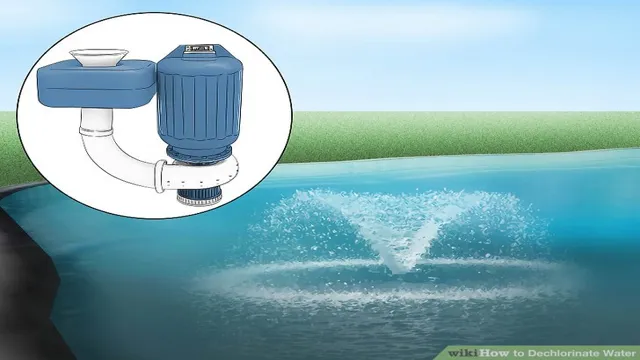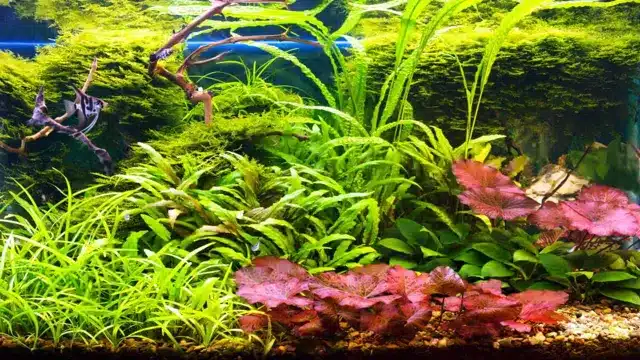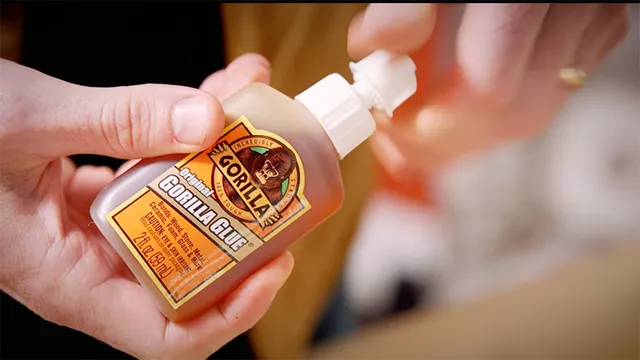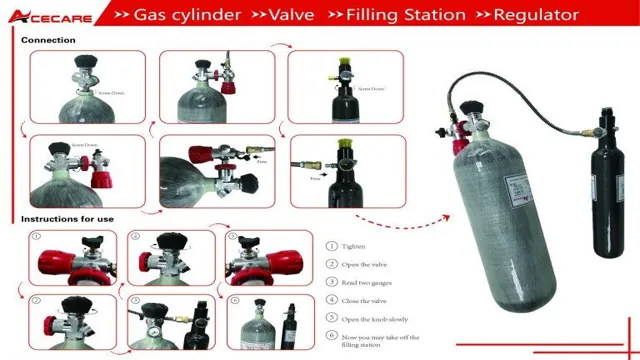How to Dechlorinate Aquarium Water: The Ultimate Guide for Fish Keepers

As an aquarium owner, one of the most important things you have to do is maintain the quality of your aquarium water. A major factor that can affect the water quality is the presence of chlorine, a chemical that’s commonly used to treat tap water. While chlorine serves as a disinfectant that can keep harmful microorganisms at bay, it can also be harmful to your fish and other aquatic creatures when present in high concentrations.
So, how do you dechlorinate aquarium water? In this blog post, we’ll discuss effective ways to remove chlorine from tap water, so your aquatic pets can swim safely and happily.
Why Dechlorinate Aquarium Water?
If you’re an aquatic enthusiast, you know how important it is to keep your fish healthy and happy. But did you know that tap water can contain harmful chemicals like chlorine, chloramines, and heavy metals that can harm your fish? That’s why it’s crucial to dechlorinate your aquarium water before adding it to your tank. Dechlorinating water removes these harmful chemicals and makes the water safe for your fish to live in.
So, how do you dechlorinate your aquarium water? There are several ways to do it – you can use commercial dechlorinators, let the water sit for 24 hours so the chlorine can evaporate, or use natural methods like adding activated carbon or a handful of live plants to your tank. Whatever method you choose, remember that dechlorinating your aquarium water is crucial for the health and well-being of your fish.
Prevent Harm to Fish and Plants
Dechlorination As aquarium hobbyists, we all want our fish and plants to thrive in a healthy and safe environment. One important step in achieving this is by dechlorinating the water we add to our aquariums. Tap water contains chlorine and chloramines, which are added to kill harmful bacteria and viruses.
However, these chemicals can be detrimental to the delicate ecosystem of an aquarium. Not only do they harm the beneficial bacteria needed for biological filtration, but they can also cause damage to fish and plants. Chlorine and chloramines can irritate fish gills, causing respiratory issues, and damage the delicate leaves of aquatic plants, leading to stunted growth or death.
Therefore, it’s essential to use a dechlorinator to neutralize these harmful chemicals before adding water to your aquarium. This small effort can make a big difference in keeping your aquatic pets and plants safe and healthy.

Maintain a Healthy Aquarium Ecosystem
If you’re an aquarium owner, you likely know the importance of keeping your fish and other aquatic creatures healthy. One critical factor in maintaining a healthy aquarium ecosystem is dechlorinating the water. Chlorine is a common additive used in tap water to kill bacteria and other harmful organisms.
While this may be beneficial for humans, it can be incredibly damaging to fish and other aquatic life. If you add tap water directly to your aquarium without dechlorination, it can cause stress on your fish and even put their health at risk. Therefore, it’s crucial to remove the chlorine from the water before introducing it to your aquarium.
There are many ways to dechlorinate aquarium water, including adding chemicals specifically designed for the task or letting the water sit for several hours before using it. Regardless of the method you choose, always remember to dechlorinate your aquarium water before introducing it to your fish and other aquatic life.
Methods for Dechlorinating Aquarium Water
If you’re a new aquarium owner, you may be unsure of how to properly dechlorinate water before it’s added to your tank. Chlorine is a common additive in tap water, but it can be harmful to aquatic life in high concentrations. Fortunately, there are a few methods you can use to remove chlorine from your aquarium water.
First, you can let the water sit for 24 to 48 hours before adding it to the tank. This allows the chlorine to dissipate naturally. Alternatively, you can use a chemical dechlorinator, which typically comes in liquid or tablet form.
These products work quickly to neutralize chlorine and other harmful chemicals in the water. Lastly, you can use a water filter to remove chlorine and other impurities from your tap water before adding it to the tank. No matter which method you choose, it’s important to make sure the water is dechlorinated before adding it to your aquarium to ensure the health and safety of your aquatic pets.
Use a Dechlorinating Agent
Dechlorinating agent Ensuring that aquarium water contains a suitable level of chlorination is crucial for maintaining healthy aquatic life. High levels of chlorine can be detrimental to fish and other marine creatures, causing stress and even death. Fortunately, there are various methods available for reducing the chlorine content of aquarium water.
One effective approach is the use of a dechlorinating agent. These compounds work by chemically removing or neutralizing chlorine and other harmful chemicals present in the water. Some common types of dechlorinating agents include sodium thiosulfate, ascorbic acid, and activated carbon.
When selecting a dechlorinating agent, it is essential to determine the appropriate dosage for the size of your aquarium and the level of chlorination present in the water. With regular water testing and appropriate use of a dechlorinating agent, it is possible to maintain a suitable environment for happy and healthy aquatic life.
Allow Water to Sit out Overnight
If you’re looking for a way to dechlorinate your aquarium water without using any harsh chemicals, you can try letting it sit out overnight. This method is a popular choice among aquarists because it’s incredibly simple and easy to do. Plus, it’s completely natural and free! Chlorine is a gas, and when you let the water sit out overnight, the chlorine in it escapes into the air, leaving you with dechlorinated water that’s safe for your fish and other aquatic creatures.
However, it’s important to note that this method won’t remove other harmful chemicals or contaminants that might be in your tap water. So if you’re concerned about things like heavy metals or pesticides, you might want to consider using a water dechlorinator or a more advanced filtration system. But for a quick and easy solution to dechlorinate your aquarium water, allowing it to rest overnight is an excellent option!
Step-by-Step Dechlorination Process
If you’re wondering how to dechlorinate aquarium water, you’ve come to the right place. Chlorine can be harmful to fish and aquatic plants, so removing it from your aquarium water is essential for maintaining a healthy environment. The process is actually quite simple and can be accomplished in just a few easy steps.
The first thing you’ll need is a dechlorinating agent such as sodium thiosulfate or sodium bisulfite. These are commonly available at pet stores and aquarium supply shops. Once you have your dechlorinator, measure out the appropriate amount based on the size of your aquarium and add it to the water.
It’s best to follow the manufacturer’s instructions for dosing. Next, stir the water to ensure that the dechlorinator is evenly distributed. It’s also important to wait a few minutes before adding the water to your aquarium.
This gives the dechlorinator enough time to neutralize the chlorine and any other harmful compounds that may be in the water. Finally, slowly add the dechlorinated water back into your aquarium. Be sure to monitor the temperature of the water to ensure that it’s consistent with the temperature in your tank.
Once the water is added, test the water quality to make sure that all traces of chlorine have been removed. Overall, dechlorinating your aquarium water is a simple and important step that should be part of your regular aquarium maintenance routine. With a little bit of effort, you can keep your fish and aquatic plants healthy and thriving.
Prepare Dechlorinating Agent
Preparing a dechlorinating agent is an essential step in the process of dechlorination. The first thing to keep in mind is to use a dechlorinating agent that suits the job at hand. Sodium sulfite is a commonly used dechlorinating agent, and it is well suited for removing chlorine from tap water.
To prepare a sodium sulfite dechlorinating agent, all you need is a clean container and some sodium sulfite. Simply mix one gram of sodium sulfite per gallon of water and stir until dissolved. Once the dechlorinating agent is prepared, it is crucial to add it to the water in precise amounts, depending on the chlorine levels.
For example, if the water contains around 1 ppm of chlorine, then you need to add roughly one gram of the dechlorinating agent for every gallon of water. It is easy to overdo the dechlorination process, so be careful not to add too much of the dechlorinating agent. By following these simple steps, you can prepare a dechlorinating agent that will work efficiently in removing the deleterious effects of chlorine from your tap water, giving you pure and safe water to use.
Apply Dechlorinating Agent to Water
Adding a dechlorinating agent to water is a critical process that removes harmful chlorine from the water. Here is a step-by-step guide on how to dechlorinate your water effectively. The first step is to test your water to determine the chlorine levels and adjust it accordingly.
The next step is to pour the appropriate amount of dechlorinating agent into the water, typically one tablespoon per ten gallons of water. Stir well and allow the water to sit for at least an hour before using it. The dechlorinating agent works to neutralize the chlorine, but it’s important to give it enough time to work its magic.
Once the waiting time is up, test the water again to ensure that the chlorine is at acceptable levels. If not, repeat the process until the desired results are achieved. When dechlorinating water for fish or other aquatic pets, be sure to use a product that is specifically designed for their needs.
Chlorinated water can be harmful to these creatures, but a dechlorinating agent can make it safe. The next time you need to dechlorinate your water, follow these simple steps for sparkling clean, safe water!
Wait for Sufficient Contact Time
Dechlorination process When it comes to dechlorination, it is important to wait for sufficient contact time for the process to work effectively. The step-by-step dechlorination process involves several stages. Firstly, the water is treated with a reducing agent, such as sodium sulfite or sodium bisulfite, which neutralizes the chlorine in the water.
The reducing agent should be added in the right proportions to ensure that all the chlorine is removed. The treated water is then stirred to ensure that the reducing agent has enough time to interact with the chlorine. This is where contact time becomes important.
The water must be left to settle for a period of time to allow the dechlorination process to work fully. Once the reducing agent has had enough time to neutralize all the chlorine, the water is ready to be used. It is important to note that the dechlorination process is critical for many applications, such as fish habitats and wastewater treatment.
Overall, the dechlorination process must be carried out correctly to ensure that the water is safe for its intended use.
Test Treated Water for Chlorine Residue
To ensure that water is safe for consumption and other uses, it should be treated and tested for chlorine residue. The dechlorination process involves removing any excess chlorine that was added during the treatment process, as it can cause harm to aquatic life and even humans. The first step is to add sodium sulfite to the water, which breaks down the chlorine into its harmless components.
After a few minutes, the chlorine will be neutralized, and the water will be ready for use. However, it is important to test the water for chlorine residue using a chlorine test kit to ensure that no harmful levels remain. This step is crucial in preventing any potential health risks associated with chlorine exposure.
By taking these precautionary measures, we can ensure the safety of the water we use and protect our environment.
Conclusion
In summary, dechlorinating aquarium water is key to ensuring the health and wellbeing of your aquatic pets. While you could try hopping in with a giant sieve to remove the chlorine yourself, a much simpler and more effective method is to use a dechlorinator solution. Just like how a good skincare routine keeps you glowing, treating your aquarium water will keep your fish happy and thriving.
Remember, chlorine might be great for disinfecting swimming pools, but when it comes to your aquarium, it’s time to say bye-bye to the chemicals and hello to the fishy fun.”
FAQs
Why is it important to dechlorinate aquarium water?
Chlorine in tap water can harm fish and other aquatic organisms. Dechlorination ensures a safer, healthier environment for these animals.
How long should I let water sit after adding dechlorinator?
Typically, 15-20 minutes is enough time for the dechlorinator to neutralize chlorine in the water.
Can I use vitamin C tablets to dechlorinate aquarium water?
Yes, vitamin C can be used as a safe and effective alternative to dechlorinator chemicals.
What is the best way to dechlorinate large volumes of water, such as for a water change?
One option is to add a dechlorinator directly to the aquarium. Another option is to use a separate container to treat the water before adding it to the tank.
Are there any natural ways to dechlorinate aquarium water?
Yes, some aquarium enthusiasts use peat moss, which can naturally remove chlorine from water.
Can dechlorination remove other harmful chemicals from tap water?
No, dechlorination only neutralizes chlorine. Other water treatments may be necessary to address issues such as heavy metals or ammonia.
Is it necessary to dechlorinate well water?
It depends on the specific well water source. Some well water may contain chlorine or other harmful substances that require treatment. It is important to test well water before assuming it is safe for aquarium use.






